Every component is essential when designing or updating the network since different elements affect the overall network performance and reliability. Ethernet cables, for instance, have various types and are considered one of the core elements of the wired network backbone with fast and stable data transmission. Have you ever thought about the effect of color selection on the organization of the network structure? The color of an Ethernet cable goes beyond mere aesthetics. It can have a significant practical value, helping with organization, troubleshooting, or improving efficiency in sophisticated environments. This paper presents and discusses the case for selecting red ethernet cables, emphasizing what advantages and additional benefits they can provide to professionals and ordinary users alike.
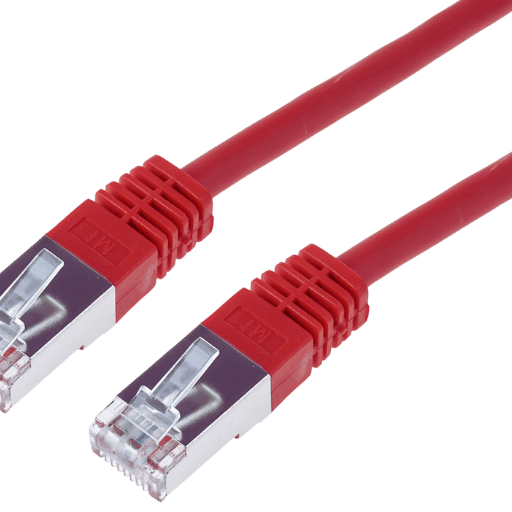
Red ethernet cables are used to identify them. Their color helps users tell them apart from other cables, making it easier to manage and solve problems with network connections. The red wires are often assigned important roles, such as connecting to essential systems, priority networks, and specific devices. Such visual clarity decreases blunders, making complex and crowded cabled systems more efficient.
Standardized cable coloring schemes are vital for maintenance and repairs within systems networks. Colors designated to particular connections enable straightforward identification for network personnel and reduce the risk of errors. Moreover, this system improves complex organizational systems like data centers and large corporate networks, as cable infrastructure is far more organized. Clear color coding helps maintain productivity, improves safety, and assists in solving problems quickly in maintenance or network development cases.
No, the color of Ethernet cables does not indicate a difference in function. The color is mostly a matter of preference, aiding network managers and administrators to tell apart different connections or assign specific roles within a network. The type of cable, whether a Cat5e, Cat6, fiber optic, etc, determines functionality, not color.
Color coding provides a visual connection identification system, making cable organization and arrangement easier. This approach reduces confusion at the setup and troubleshooting stages by assigning specific colors to set tasks, like blue for internet connections and yellow for VoIP systems. This method increases efficiency, decreases errors, and enhances scalability in more complicated networks. Color coding aids clear labeling, ensuring that updates and repairs are accurate and rapid with blue cables.
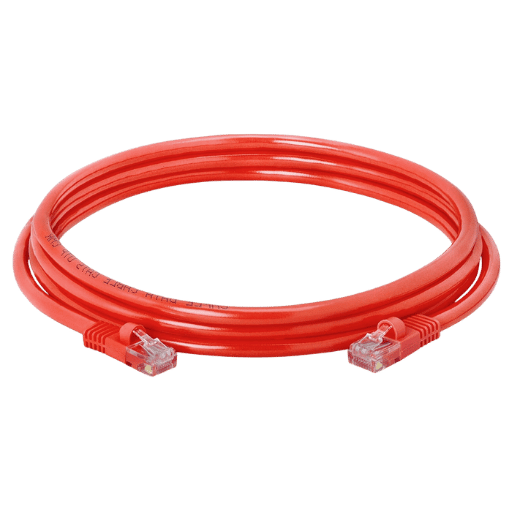
Red Ethernet cables are allocated to essential connections in the data center. Network administrators quickly identify these connections and can remove them when necessary. This process improves organization, enables efficient troubleshooting, and minimizes downtime during maintenance or emergencies. Additionally, identifying essential connections within complex network infrastructures is easier with red cables. Red cable management is a distinct marker that improves order and organization, helping keep essential network connections easily identifiable and managed appropriately.
A red Cat6 cable does not increase network performance compared to Cat6 cables of different colors. The performance of a Cat6 cable is defined by its technical parameters, boarding capacity, which can go as high as 250 MHz, and data transfer rates, which can reach 1 Gbps in standard configurations. The color of the cable is only for visibility or identification and does not affect the functionality or performance of the cable itself.
Cat 6 Ethernet cables are an excellent option for newer network configurations due to their data transfer speeds and bandwidth capabilities, which outclass previous cable categories. They can process data at 1 Gbps and have a frequency rate of 250 MHz, guaranteeing adequate and reliable data transmission. Moreover, the improved insulation facilitates a crosstalk reduction and significantly improves the overall signal quality for Cat 6 cables. Because of these attributes, Cat 6 cables are perfect for homes or offices with stable and high-quality network connections.
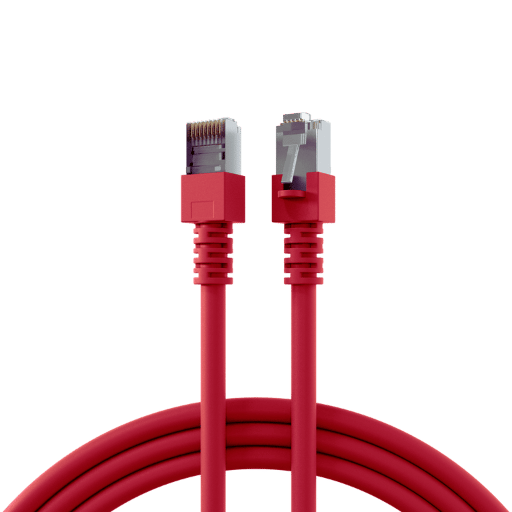
Cat6 and Cat6a cables are both Ethernet Cables of the increased category and support high networking activities. Nevertheless, their differences have to do with the speed, bandwidth, and the shielding itself.
Cat6 wires can transfer data at a maximum speed of 1 Gbps within a 100m distance and can also support up to 10 Gbps in shorter distances, typically up to 55m. Cat6 cables have a reliable performance at a maximum frequency of 250 MHz, ideal for home and business purposes. However, Cat6 cables suffer from external interference and cross-talk compared to other advanced ones.
Cat6a, or Cat6 augmented cables, were created to address the shortcomings of Cat6 cables. They support speeds of 10 Gigs at all ranges of the 100-meter distance and operate at a maximum frequency of 500 MHz, improving Cat6’s bandwidths twofold. Improved cross-talk mitigation and protection from electromagnetic interference (EMI) make Cat6a cables more appropriate for higher network activity or long cable runs.
As a result, Cat6a cables are chunkier and less flexible than Cat6 cables, which may affect installation in cramped areas. Cat6 cables are cheaper and ample for standard networking requirements, whereas Cat6a Ethernet cables are perfect for upgrading networks, especially in scenarios with heightened speed and bandwidth demands. Both cables can be used with the same Ethernet port, thus efficiently serving different network needs.
The Cat5e (Enhanced Category 5) is an economical yet comprehensive solution in several networking scenarios. With their support for Gigabit Ethernet (up to 1000 Mbps), these cables can manage up to 100 MHz of frequency. In addition, they can support small- to medium-sized networks without performance issues. Another essential factor to consider with Cat5e cables is the lower rate of crosstalk that they face (compared to Cat5) due to the improved manufacturing standards. This allows for a clearer signal, which provides better reliability in the entire network.
Since Cat5e cables are thinner and easier to handle, installation is simple under challenging locations where space is not easily accessible. However, Cisco’s Cat6 offers superior performance. A range of 100 meters (328 feet) for Ethernet connections is sufficient for almost every residential and business need. In addition, Cat5e cables are backward compatible with older technologies and devices while being cheaper than higher-grade cables like Cat6 or Cat6a, making them perfect for budget-sensitive users looking to build or upgrade a network. Cat5e cables represent an optimal construction when affordability is required without sacrificing performance for everyday applications such as standard office activities, streaming, and VoIP.
The selection between Cat6 and Cat5e cables is determined by the specific configurations in one’s network and how much one plans to scale. Compared to Cat5e, Cat6 cables are much more efficient because they can perform as fast as 10 Gbps over distances of up to 55 meters (180 feet). In addition, Cat6 cables have more excellent resistance to crosstalk, making them suitable for tasks involving large data transfers or gigabit networks. Meanwhile, Cat5e cables are just enough for standard uses such as internet surfing and only support 1 Gbps over 100 meters (328 feet), making it cheaper than Cat6. If one plans to upgrade the network later or anticipates extra demands on data, then Cat6 would be a better investment. However, for nearly all daily activities in small office or home settings, Cat5e would do just as well, all while being easier on the pocket.
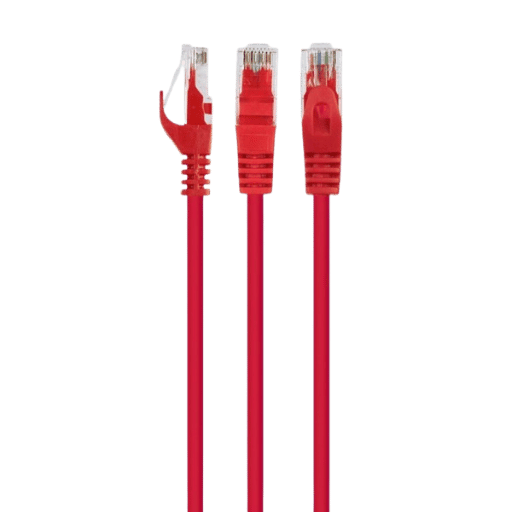
Cat6 Ethernet cables have been specifically designed to overcome numerous issues during cable installation and management. The snagless design incorporates molded strain relief boots, which protect the locking of the RJ45 connector from breaking or getting snagged when the cable is inserted or removed from the socket. This feature is particularly beneficial when cables are often unplugged or pulled through cramped areas, resulting in lower operational and maintenance costs.
Furthermore, Snagless cables help preserve the quality of the terminations over time, as the connectors are safeguarded from mechanical impacts. When all these features are combined with the performance of Cat6 cables, which includes 10 Gbps speed and tougher crosstalk mitigation, Snagless cables are undoubtedly ideal for high-performance networking purposes. Snagless Cat6 cables offer a rigid and effective solution that guarantees reliability and the required efficiency for server rooms, data centers, and even home offices.
Snagless technology boosts a cable’s life span by protecting the connector from damage caused by constant unplugging, storage, or even rerouting. The release tab boots prevent injury, which might be sustained over time due to continuous physical stress. Snagless cable designs ultimately maintain the structural integrity of the cable, mitigating the risk of chronic connection failures, setting the foundation for guaranteed performance, and significantly increasing the overall lifespan of the cable.
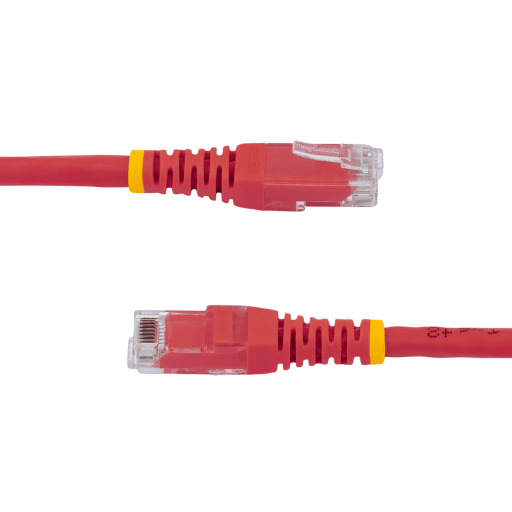
Color coding is an effective method of organizing connections and functions since it offers an easy way to comprehend the purpose of each cable. This method assists in differentiating between various sections of the network and the types of devices involved, or even Ethernet cable functions, as color coding reduces mistakes during installation and servicing. Cables that depict specific roles, such as blue for internet ports and yellow for power over Ethernet (PoE), enhance server room administration. This form of organization will save time and improve system management in cluttered locations like data centers or network offices.
The application of color coding in Ethernet networks enables me to quickly sort, identify, and manage the cables based on their intended connections. Examples include streams of specific colors assigned to uplink ports, device connections, or VLANs. This dramatically simplifies troubleshooting and minimizes mistakes likely to surface when using Ethernet cables. This system maintains order in the configuration of devices, enabling efficient maintenance and upgrading of the network.
A: Red Ethernet cables can serve a specific purpose in a network and are helpful for specific identification, such as marking certain attributes, processes, roles, or even servers within a network. Differentiating the types of Ethernet cables used in the network helps with organization and management, especially in large and complex network setups.
A: Color coding reduces and, in many instances, eliminates the guesswork in identifying cables and their respective functions, types, and connections within a network. It saves time and increases productivity by ensuring the network is installed and troubleshooted accurately.
A: Shielded Ethernet cable has an additional shielding layer, while UTP cables lack that. This makes the latter type more prone to interference. UTP is usually employed in places with low chances of interference, while the additional shielding enables its use in areas with high electromagnetic interference.
A: Cat 6 Ethernet cables can support higher network speeds, carrying data up to 10 Gbps in short distances of 55 meters. Their improvement over Cat 5 cabling is found in the tighter pitch of the twisted pair, which significantly reduces crosstalk and enhances the overall signal quality.
A: These Cat6 Snagless cables have been engineered to prevent the RJ45 connector latches from snagging onto other cables or disengaging during installations. Thus, they are ideal when used in high-density cabling environments or areas where cables are frequently plugged in or unplugged.
A: RJ45 connectors serve as a connecting interface for or to network devices with Ethernet ports. They are commonly used with computers, routers, switches, and Cat6 Ethernet patch cords. These connectors allow the configuration of devices into a local area network (LAN) and ensure a stable connection for data traffic over the network, mainly when used with gigabit Ethernet.
A: Patch cables are shorter Ethernet cables typically used to connect various network devices to a patch panel or a switch, such as Cat6 ethernet patch cables. These cables, which aid in linking devices within a network rack, are commonly referred to as patch panel cables; they are used to make network cabling more organized and cleaner.
A: The 550MHz frequency rating of Cat 6 cables determines their bandwidth capacity. The higher the data rate, the higher the frequency; hence, the better the data transfer. This frequency rating guarantees reliable performance for high-speed data transmission and applications that rely on high-volume network traffic.
A: No, the color of an Ethernet cable, including red, affects nothing in performance. The color is mainly for identification purposes but is often overlooked. The cable category (Cat 6) greatly determines its performance.